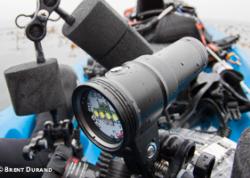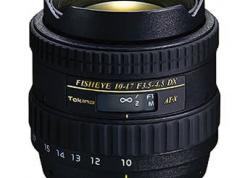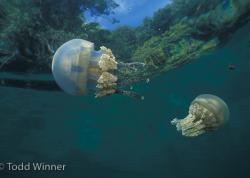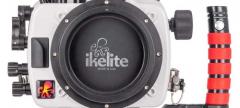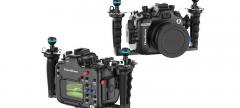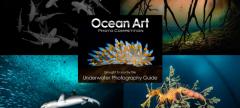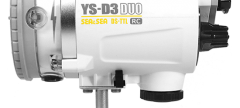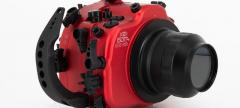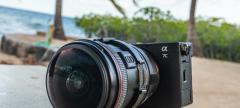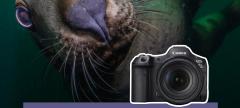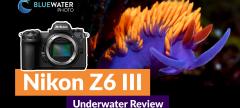Photography Glossary
1:1 Magnification: A lens can achieve 1:1 magnification if it can take a photo the size of its sensor. Not all lenses that claim to be “macro” lenses can achieve 1:1 magnification.
35mm Equivalent: A lens’ focal length multiplied by the sensor’s crop factor. A 60mm lens on a D300, which has a 1.5 crop factor, is 90mm when using 35mm equivalent.
ACR: Adobe Camera Raw
Ambient Light: Light from the sun, also called natural light. Read more on ambient light underwater photography.
Angle of View: A measure of how wide the view of a lens is.
Aperture: Circular opening behind your lens that lets light in. The diameter changes as you change your f-stop. Read more about aperture.
Barrel Distortion: A type of distortion, common in less expensive wide-angle lenses, where straight lines at the edges of the image start to appear slightly curved. This can be corrected in post-processing software. Fisheye lenses exhibit a great amount of barrel distortion, but this is the intended effect.
Base ISO: The ISO of a camera that provides the least noise and greatest dynamic range. Many DSLRs have a base ISO of 80 or 100.
Beam Angle: A measurement of how wide of a beam a strobe will put out. Beam angles of 90-110 degrees are common for strobes suitable for wide-angle photography.
Bit Depth: Number of bits of data the camera stores per pixel; 12 or 14 bits
Bokeh: The Japanese word for “blur.” A measure of how pleasing the background of an image is when blurred. Different lenses blur the background differently, resulting in different bokehs.
Bracketing: Shooting a subject 3 times, with the 2nd and 3rd shot at higher and lower exposures. Used to ensure a correct exposure or for blending multiple exposures into an HDR image.
Bulkhead: Component on underwater housings that allows connection of electronic sync cords.
Chromatic Aberration: A type of distortion that manifests itself as “fringing” of colors along high-contrast boundaries. Because substances have slightly different refractive indexes for different wavelengths of light, colors end up being focused on different points on the images.
Color Temperature: A number, in degrees Kelvin, that tries to represent the approximate color of the light. Higher numbers are cooler, more blue. Lower numbers are warmer, more yellow or red. Also see white balance.
Contrast: The difference between the lightest and darkest part of the photo.
Crop Factor: The sensor length / 35mm. 1.3 – 1.6 is the range for most cropped sensor dSLRs, 1.0 for full-frame DSLRs, 2.0 for Olympus DSLRs.
Crop Sensor: A camera with a crop factor greater than one.
DOF – Depth of Field: The area of an image that appears sharp or in focus. Read more about depth of field in underwater photography.
Desiccant: A chemical in a small bag that absorbs moisure.
Diffraction: A loss of sharpness at 100% magnification as a result of shooting at too small of an aperture.
Diffusion: The softening of light because the light is coming from multiple sources. Can be created by various substances such as tussue paper, clouds, a translucent window, a milk carton, haze or a diffuser on a strobe. A byproduct of diffusion is softer shadow boundaries.
DSLR: Digital single lens reflex.
Fast Lens: Lens with an aperture of F2.8 or larger. They usually auto-focus fast, even in low light. Also useful in creating Bokeh.
Fiber Optic Cable: A cable connecting the camera to an underwater strobe. Contrary to electronic sync cords, fiber optic cables require the camera flash to fire then transmit the light signal to the strobe.
Flashgun: Another term for a strobe.
Focal Plane: A plane parallel to your camera sensor that is in perfect focus.
Front Curtain Sync: A camera mode where the flash fires as soon as the shutter opens. This is the default mode in all cameras.
Full Frame: A camera with a 35mm width sensor.
Guide Number: A number that represents the strength of a strobe. It’s f-stop number x distance to subject (in feet or meters). Guide numbers can be in air or underwater. The numbers underwater will be much smaller.
HDR – High Dynamic Range: The combination of several images of several exposures to ensure that all elements of an image are exposed to taste. Most often created by bracketing exposures.
Hot Shoe: The slot on top of a camera that accepts an external flash or a hot shoe cord from an underwater housing.
Hyperfocal Distance: The minimum distance at which you can focus while still having the infinity distance in focus. Follow this linke for more info: http://www.dofmaster.com/hyperfocal.html
IQ – Image Quality: A somewhat vague term used by the masses about the image quality a lens or camera sensor will produce in the right hands.
Lembeh Stick: Thin metal rod with a wrist lanyard, used to push yourself away from the reef or sand without using your hands or feet. Used by many dive guides in Lembeh straits.
ISO: Stands for International Standards Organization. A measure of how much a signal from your camera sensor is amplified. Read more about ISO underwater.
JPEG: Stands for Joint Photographic Experts Group. The most common format for images, generally not containing all available data from the image sensor.
Lens Element: A single piece of optical glass inside a lens. Modern lenses often have several lens elements inside.
Lens Speed: Maximum aperture of a lens.
Matrix Metering: A Nikon term for a method of calculating exposure that uses a large area of the frame. Canon’s equivalent is called Evaluative Metering.
Minimum Focus Distance: Distance from the camera sensor to the subject, which varies depending on lens being used. Slightly different than working distance, but often interchanged.
OEM: Original Equipment Manufacturer
Prime Lens: A lens that has no zooming capability and aperture of F2.8 or lower. Often sharper than zoom lenses.
Pixel: The smallest unit of color and brightness in an image. Originally comes from “picture element.”
RAW: Camera image format that contains minimally processed data. RAW files require a raw converter and allow much greater editing flexibility during post-processing. RAW files contain much more information than JPEG files.
Rear Curtain Sync: A camera mode where the strobe fires right before the shutter closes. This mode can be specially set on most DSLRs. When used with slow shutter speed, this mode will give the effect of a motion trail behind the subject.
Refraction: Refraction is the bending of light as it passes from one medium to another. The light changes speed and direction. The wavelength of the light will change but not its frequency. Refraction occurs when light passes between water and air, and is responsible for causing objects to appear larger than they are, as well as Snell’s Window. Here is a visual demonstration: http://www.ps.missouri.edu/rickspage/refract/refraction.html
Reproduction Ratio: The ratio of image size to sensor size. 1:1 means a lens can take a photo of a subject the same size as its sensor. 1:3 means the smallest object a lens can photograph is 3 times the size of the camera sensor. Reproduction ration = 1 / maximum_magnification. See the lens tables for lists of maximum magnifications for various lenses.
Sensor: The silicon chip inside your camera that converts photos of light coming from your lens into voltages.
Shutter Sync Speed: Same as strobe sync speed.
Slave Strobe: A strobe that fires when it sees another strobe fire (optically or electronically).
Slow Lens: Lens with a largest aperture greater than F2.8. A slow lens will have trouble auto-focusing in dim light.
Spot Metering: A method of calculating exposure that only uses one small area.
Stop Down: Reducing your aperture, e.g. – going from F8 to F10. Stopping down from 5.6 to F8 is “stopped down” one f-stop.
Strobe Falloff: The rule that says the light from a strobe decreases in power proportional to the square of the distance from the strobe. The strobe power = C/(X*X), where C is a constant, and X is the distance between the strobe and the subject. Moving a subject from 1ft to 2ft away from a strobe will reduce its power by ¼.
Strobe Sync Speed: The fastest speed at which a normal strobe can be used with a camera. Normally it is 1/200 to 1/320 on DSLRs with mechanical shutters. Electronic shutters will allow faster sync speeds, but this may result in reduced strobe power if the speed is faster than the strobe sync speed.
Strobe Sync Speed – (definition 2): The speed at which the light of a strobe flashes, often around 1/10,000th of a second.
Sync Cord: An electronic cable that connects your strobe to a camera or TTL converter.
Sync Speed: The fastest shutter speed at which you can use strobes with your camera.
TTL – Through the Lens: A mechanism to automatically evaluate and set exposure by measuring the light coming through the lens.
Vignetting: Light falloff in the corners of an image, usually when too small of a port or a filter blocks light from reaching the corners. If the lens is a zoom lens, zooming in often eliminates the vignetting.
White Balance: A feature in digital still and video cameras that defines (and is used to accurately set) the color white, which affects the hue of all colors being recorded.
Working Distance: The distance from the lens front element to the subject, at the minimum focusing distance.
Zoom Lens: A lens with a variable focal length.
Further Reading
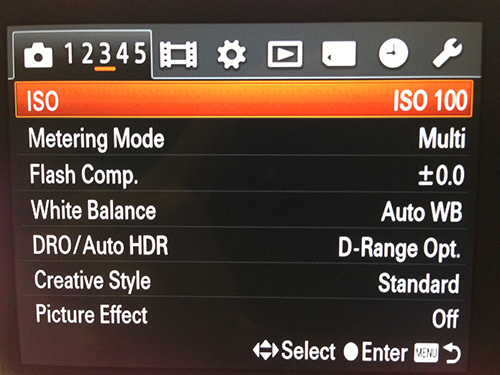
RECOMMENDED ARTICLES
SUPPORT THE UNDERWATER PHOTOGRAPHY GUIDE:
The Best Service & Prices on u/w Photo Gear
 Visit Bluewater Photo & Video for all your underwater photography and video gear. Click, or call the team at (310) 633-5052 for expert advice!
Visit Bluewater Photo & Video for all your underwater photography and video gear. Click, or call the team at (310) 633-5052 for expert advice!
The Best Pricing, Service & Expert Advice to Book your Dive Trips
 Bluewater Travel is your full-service scuba travel agency. Let our expert advisers plan and book your next dive vacation. Run by divers, for divers.
Bluewater Travel is your full-service scuba travel agency. Let our expert advisers plan and book your next dive vacation. Run by divers, for divers.





